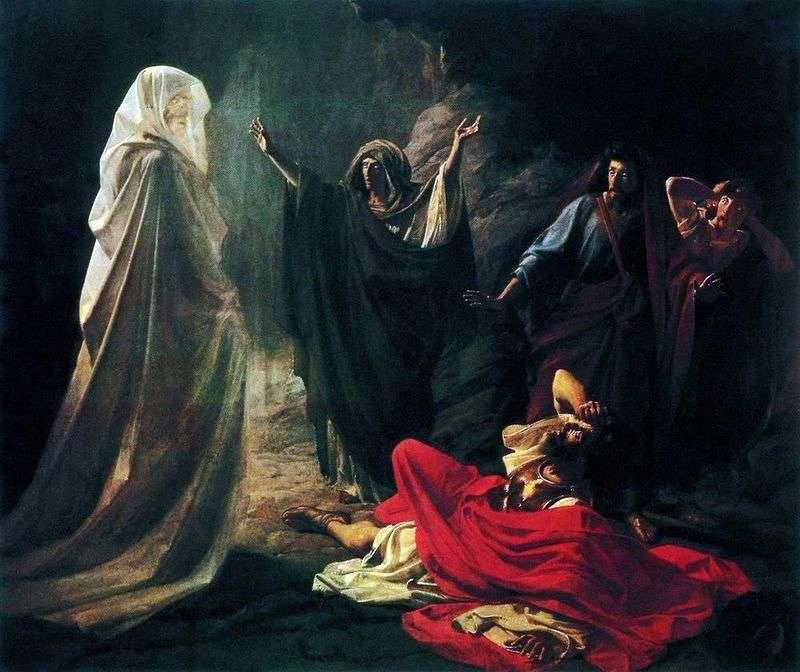
In his works Ge sought not only to raise major philosophical questions, but also did it with great skill. Especially he succeeded in sacred biblical subjects, which took the minds of theologians for many centuries. “Saul at the Endor’s Sorceress” or “The Endorian Sorceress Causes the Shadow of Samuel” – a delightful masterpiece by Nikolai Ge, for which the painter was awarded a large gold certificate and a trip to Italy for training and internships.
The plot of the picture is this: preparing for the battle with the Felicity, King Saul decides to turn to the sorceress for prophecy – the ruler has ceased to dream and believes that his connection with God is lost. However, it is not easy to find a sorceress, Saul himself ordered to evict all magicians and sorcerers, for fear of curses and bloat. Once at the witch, she asked him, the spirit of which person wants to call Saul. The king’s decision was surprising – he wants to hear the answer from Samuel, a man who, during his lifetime, predicted the death of the ruler and all his sons. This time, Saul wants to hear other words from Samuel, but his spirit is exactly the same as the old prophecy – in the battle with the king’s felystims, death awaits. The unfortunate Saul falls back on the ground, losing his last hope – this is the moment and captured Ge.
Who really appeared to Saul? Was it a spirit or a sorceress just a charlatan? Is it possible to summon a spirit from that light at all? These issues have been the subject of numerous discussions. He does not seek answers and does not illustrate his truth – he skillfully displays the biblical story in the form in which it reached us.
The picture is made in gloomy colors with the use of color contrasts – white attire of spirit and red mantle of Saul expressively distinguish them on a dark background as the quintessence of the whole plot. All the figures are given in a somewhat sculptural way, which does not diminish the expressiveness of the characters.
An attentive spectator will easily notice the academic manner of writing, as well as follow the traditions of Karl Bryullov. However, neither this stern style, nor the imitation of the great Bryullov, in no way prevented the young talented artist from creating a colorful original and very expressive canvas.
 Saul par la sorcière endor – Nikolai Ge
Saul par la sorcière endor – Nikolai Ge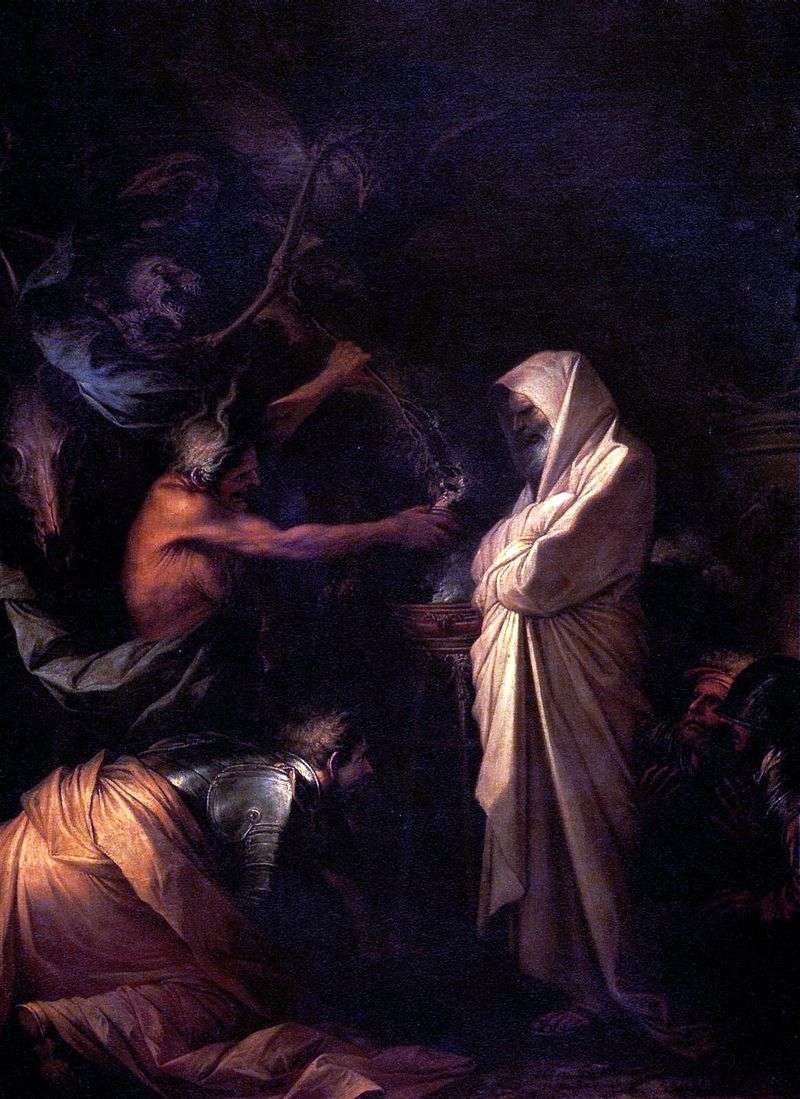 The Spirit of Samuel Called to Saul by the Sorceress of Aendor by Salvatore Rosa
The Spirit of Samuel Called to Saul by the Sorceress of Aendor by Salvatore Rosa Saul en la bruja de Endor – Nikolay Ge
Saul en la bruja de Endor – Nikolay Ge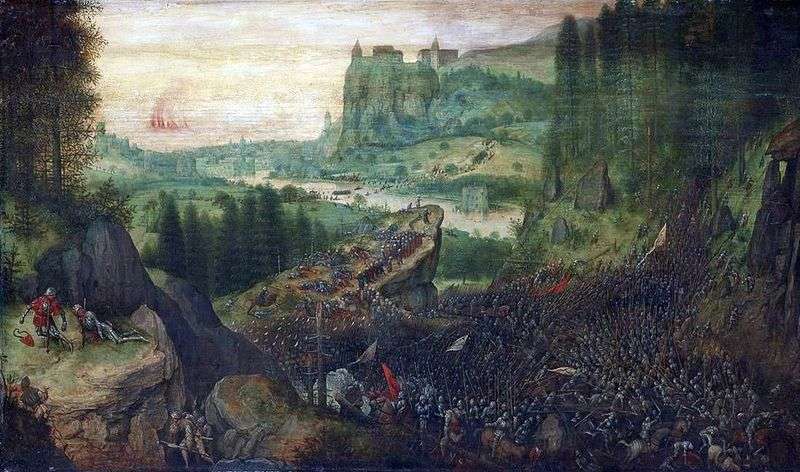 Suicide of Saul by Peter Brueghel
Suicide of Saul by Peter Brueghel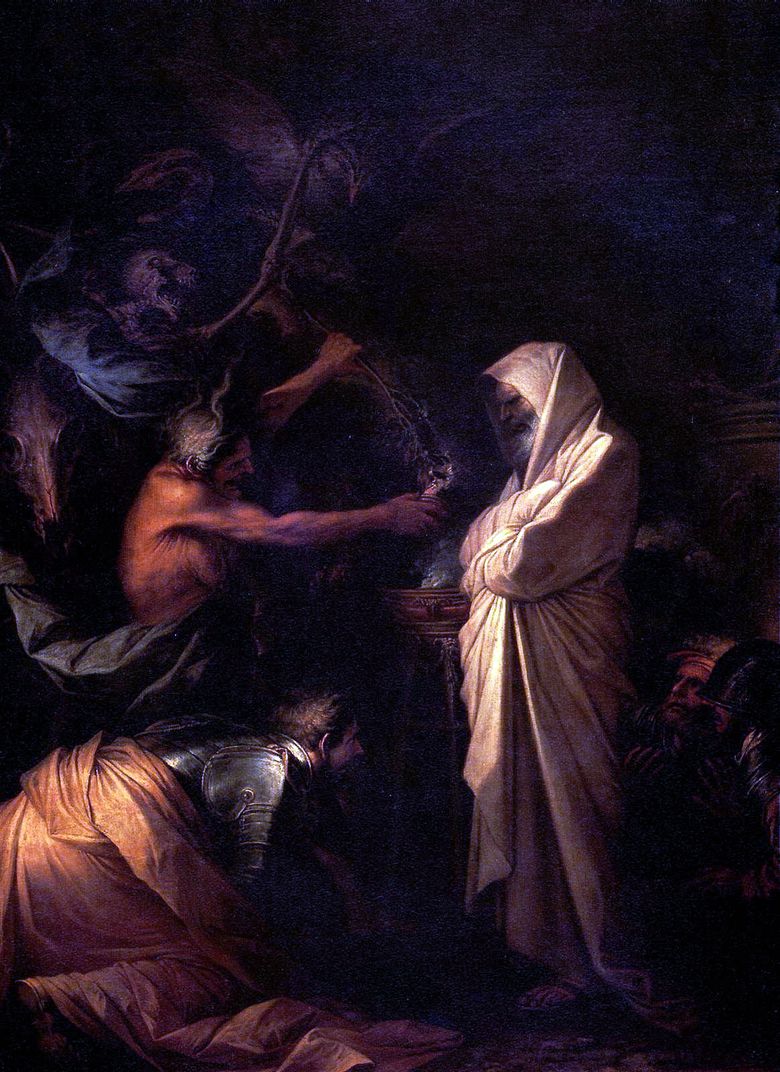 L’esprit de Samuel, appelé à Saül par l’enchanteresse d’Endor – Salvatore Rosa
L’esprit de Samuel, appelé à Saül par l’enchanteresse d’Endor – Salvatore Rosa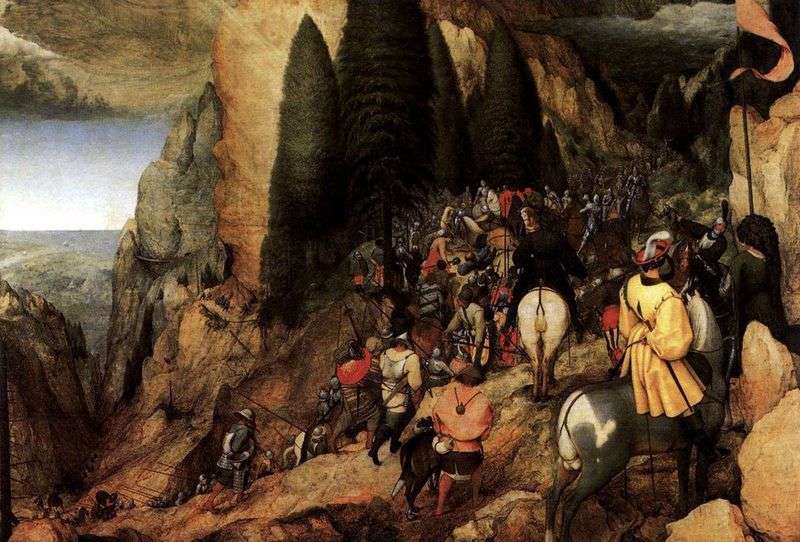 The Conversion of Saul by Peter Brueghel
The Conversion of Saul by Peter Brueghel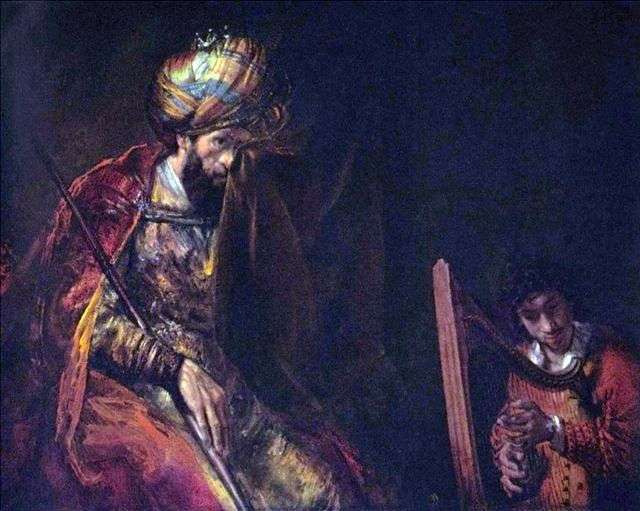 David plays king Saul by Rembrandt Harmens van Rhine
David plays king Saul by Rembrandt Harmens van Rhine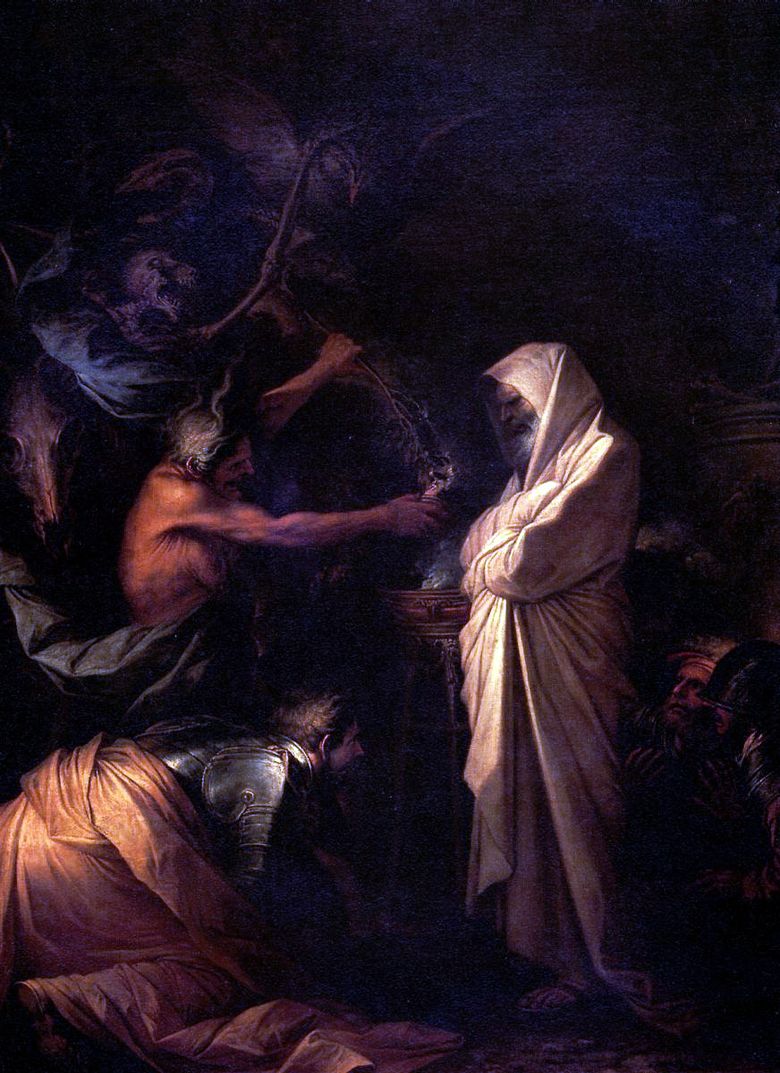 L’esprit de Samuel appelé à Saül par l’enchanteresse d’Endor – Rosa Salvator
L’esprit de Samuel appelé à Saül par l’enchanteresse d’Endor – Rosa Salvator